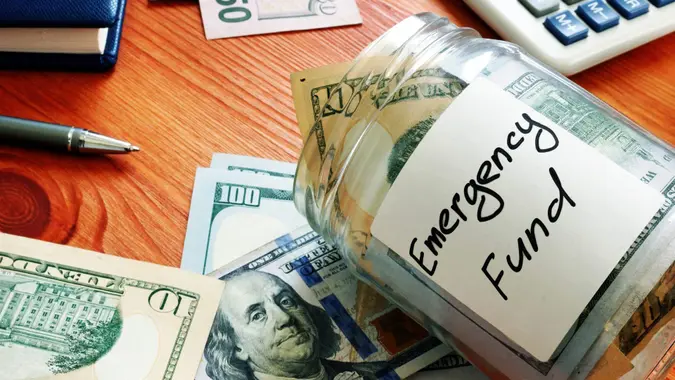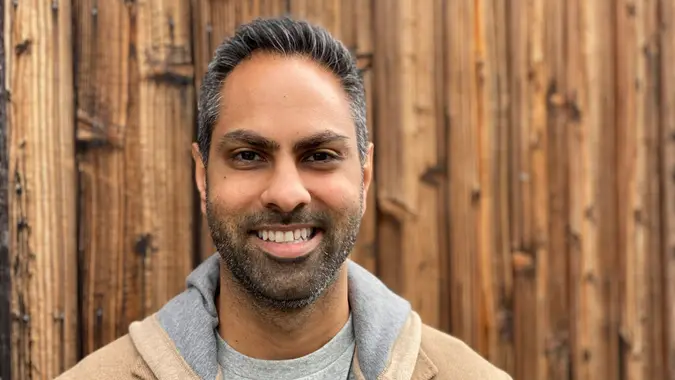7 ‘Normal’ Expenses the Middle Class Accepts Without a Second Thought — but Shouldn’t

Commitment to Our Readers
GOBankingRates' editorial team is committed to bringing you unbiased reviews and information. We use data-driven methodologies to evaluate financial products and services - our reviews and ratings are not influenced by advertisers. You can read more about our editorial guidelines and our products and services review methodology.

20 Years
Helping You Live Richer

Reviewed
by Experts

Trusted by
Millions of Readers
Like many people in the middle class, you work hard and save your money wisely. Still, it feels like your accounts are being drained by little fees that add up in a big way over time — bank fees, HOA fees, car payments, high property taxes. Among other expenses, they feel like death by a thousand cuts to your income. But they’re inevitable, right?
Well, not necessarily. Though people in the middle class have come to accept certain expenses as normal parts of life, experts GOBankingRates spoke to say they shouldn’t be so sure. Some of these expenses deserve a second look — and a few changes — to help you hold on to more of your hard-earned money.
1. Bank Fees
Bank fees can add up without you realizing it because so many of them are small. Overdraft transfers, out-of-network ATM charges and minimum balance penalties are sneaky because they’re often recurring expenses you may not even notice.
According to Brian Swanson, President of the Consumer Bank at Axos Bank, consumers would be wise to make themselves aware — and to start examining their statements more closely.
“When customers take a closer look at their accounts or use tools that reveal those costs, they are often surprised by how much they are giving back to the bank each year. Awareness is powerful,” he said. “Once people see where their money is going, they can make informed choices. That kind of clarity is the foundation of financial confidence.”
Swanson describes the problem as one of inertia — for both banks and consumers. Banks have held fast to traditional models built decades ago without updating them for a digital-first, customer-focused era. Meanwhile, customers frustrated by recurring fees often stay put out of convenience, keeping their deposits and payments with the same bank out of habit.
But there’s good news for consumers who want to break that cycle.
“That pattern is changing as digital innovation increases transparency and competition,” Swanson said. “Customers are beginning to expect and choose banking experiences that put their interests first.”
2. Property Taxes
Every day, Taylor Kovar, CFP, and founder and CEO of 11 Financial, helps clients make the most of their money. That means looking at unexpected places where they might be overspending — including expenses that may seem unchangeable, such as property taxes. Kovar says that surprisingly, even property taxes are negotiable in most places.
“You can appeal your appraisal with a few photos and some paperwork, and I’ve seen people knock hundreds or even thousands off their annual bill,” he said. “It’s one of the easiest ways to give yourself a raise.”
3. Mortgage Interest
When’s the last time you revisited your mortgage loan? Kovar said most homeowners never look at their loans after signing the papers, but doing so could help them cut significant costs.
“Refinancing or switching to biweekly payments can shave years off a mortgage and save tens of thousands over time,” he said.
4. Insurance Rates
Another major expense that middle-class people take on is related to their insurance rates. Kovar said many people stay with the same insurance company for decades out of comfort — even as rates creep up slowly every year.
“Shopping around every six to 12 months keeps companies honest and premiums competitive,” he said. “Even changing deductibles or bundling differently can make a big difference.”
5. HOA Fees
Many middle-class homeowners buy in neighborhoods with homeowners associations to benefit from amenities like playgrounds or pools, or strong neighborhood leadership. However, Leslie H. Tayne, Esq., a finance and debt expert and founder of Tayne Law Group, said homebuyers should weigh those benefits against the costs of HOA fees.
She also noted that it’s possible to find a home with amenities you enjoy in a community you like — without dealing with an HOA.
“There are often attractive homeownership options that come without the added cost or restrictions of an HOA,” she said. “If you’d rather not ask for permission to paint your house or deal with HOA rules, a non-HOA neighborhood might be the freedom you’re looking for, and it could save you money in the long run.”
6. Auto-Related Costs
Tayne said most middle-class families are used to having a revolving car payment because they’ve gotten into the habit of upgrading every few years.
“Vehicles depreciate faster than most investments. Plus, they break down, costing the consumer more than just their monthly payment,” she said. “Then there are also insurance costs, gas and parking fees.”
She said you’re often better off with a reliable older car that doesn’t come with a regular payment. Or, to avoid the expenses of car ownership altogether, consider public transportation — provided you live in a city where it’s accessible and safe.
Tayne also encourages middle-class families to challenge the assumption that every household member needs their own car.
“Rather than paying for the convenience of your own car, choose the more economical option and enjoy the increased financial flexibility,” she said.
7. Entering a Higher Tax Bracket
According to Chad D. Cummings, a financial planning and tax attorney and CPA at Cummings and Cummings Law, middle-class earners are often subject to a “silent killer” when inflation nudges their salaries upward — putting them into higher tax brackets without them even realizing it.
“Because deductions and credits phase out silently — many CPAs never tell their clients this until after the tax bill arrives — households may pay thousands more in taxes without any meaningful increase in net purchasing power,” he said. “Most clients never realize this until I prepare a multiyear projection showing that their tax liability has doubled while their lifestyle has remained flat.”
The Bottom Line
For middle-class earners, some of the biggest drains on income can come from unexpected places — like the small fees or expenses that seem inevitable. With a willingness to dig deeper and question some of these costs, you can save more money and make your hard work go further.
This article is part of GOBankingRates’ Top 100 Money Experts series, where we spotlight expert answers to the biggest financial questions Americans are asking. Have a question of your own? Share it on our hub — and you’ll be entered for a chance to win $500.
More From GoBankingRates
 Written by
Written by  Edited by
Edited by 
























